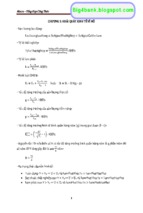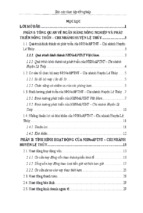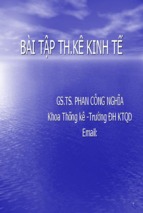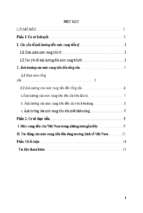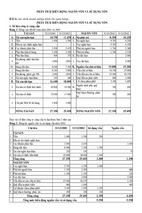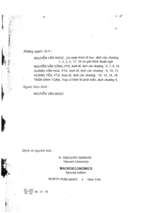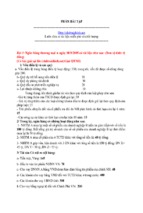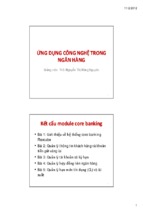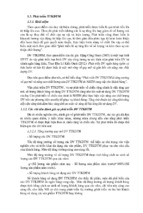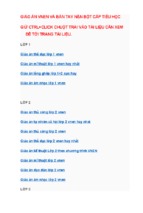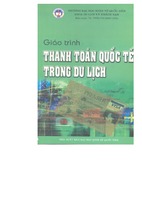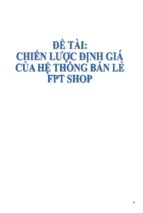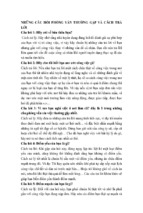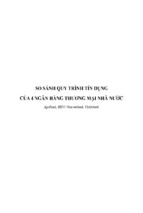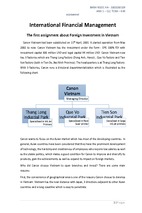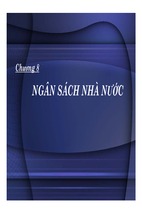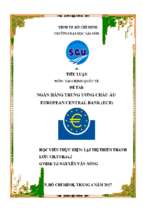Chapter 3: Tutorial questions - FX Risks and Derivatives
1.
What are the four FX risks faced by FIs?
The four risks include trading in foreign securities, making foreign currency loans,
issuing foreign currency-denominated debt, and buying foreign currency-issued
securities.
2.
What is the spot market for FX? What is the forward market for FX? What is the
position of being net long in a currency?
The spot market for foreign exchange involves transactions for immediate delivery of a
currency, while the forward market involves agreements to deliver a currency at a later
time for a price or exchange rate that is determined at the time the agreement is reached.
The net exposure of a foreign currency is the net foreign asset position plus the net
foreign currency position. Net long in a currency means that the amount of foreign assets
exceeds the amount of foreign liabilities.
3.
On 15 December 2011, you convert $500 000 Australian dollars to Japanese yen
in the spot foreign exchange market and purchase a one-month forward contract to
convert yen into dollars. How much will you receive in US dollars at the end of the
month? Use the data in Table 13.1 for this problem.
4.
X-IM Bank has SF14 million in assets and SF23 million in liabilities and has sold
SF8 million in foreign currency trading. What is the net exposure for X-IM? For what
type of exchange rate movement does this exposure put the bank at risk?
The net exposure would be SF14 million – SF23 million – SF8 million = -SF17 million.
This negative exposure puts the bank at risk of an appreciation of the yen against the
dollar. A stronger yen means that repayment of the net position would require more
dollars.
5.
What two factors directly affect the profitability of an FI’s position in a foreign
currency?
The profitability is a function of the size of the net exposure and the volatility of the
foreignexchange ratio or relationship.
6.
The following are the foreign currency positions of an FI, expressed in dollars.
(a)
What is the FI’s net exposure in euros?
Net exposure in Euro = $70,000.
(b)
What is the FI’s net exposure in UK pounds?
Net exposure in UK pounds = $23,000.
(c)
What is the FI’s net exposure in Japanese yen?
Net exposure in Japanese yen= -$31,000
(d)
What is the expected loss or gain if the € exchange rate appreciates by 1 per cent?
If assets are greater than liabilities, then an appreciation of the foreign exchange rates will
generate a gain = $70,000 x 0.01 = $7,000.
(e)
What is the expected loss or gain if the € exchange rate appreciates by 2 per cent?
Gain = $70,000 x 0.02 = $1,400
7.
What are the four FX trading activities undertaken by FIs? How do FIs profit from
these activities? What are the reasons for the slow growth in FX profits at major banks?
The four areas of FX activity undertaken by FIs are either for their customer’s accounts
or for their own proprietary trading accounts. They involve the purchase and sale of FX
in order to complete international commercial transactions, invest abroad in direct or
portfolio investments, hedge outstanding currency exposures, and speculate against
movements in currencies. Most banks earn commissions on transactions made on behalf
of their customers. If the banks are market makers in currencies, they make their profits
on the bid-ask spread.
A major reason for the slow growth in profits has been the decline in volatility of FX
rates among major European currencies that has more than offset the increased volatility
of FX rates among Asian currencies. The reduced volatility is related to the reduction in
inflation rates in the European countries and the relatively fixed exchange rates that have
prevailed as the European countries move toward full monetary union.
8.
Sun Bank of Byron Bay purchased a 16 million euro one-year loan that pays 12
per cent interest annually. The spot rate for euro is €1.60/$1. Sun Bank has funded this
loan by accepting a UK pound- (GBP) denominated deposit for the equivalent amount
and maturity at an annual rate of 10 per cent. The current spot rate of the UK pound is
$1.60/£1.
a.
What is the net interest income earned in dollars on this one-year transaction if the
spot rates at the end of the year are €1.70/$1 and $1.85/£1?
Loan amount = €16 million/1.60 = $10 million
Deposit amount = $10m/1.60 = £6,250,000
Interest income at the end of the year = (€16m x 0.12)/1.7 = $1,129,411.77
Interest expense at the end of the year = (£6,250,000 x 0.10)x 1.85 = $1,156,250
Net interest income = $1,129,411.77 - $1,156,250.00 = -$26,838.23
b.
What should be the GBP to AUD spot rate in order for the bank to earn a net
interest margin of 4 per cent?
A net interest margin of 4 percent would imply $10,000,000 x 0.04 = $400,000.
The net cost of deposits should be $1,129,411.77 - 400,000 = $729,411.77.
Pound rate = $729,411.77/625,000 = $1.1671/£.
Thus, the pound should be selling at $1.1671/£ in order for the bank to earn 4 percent.
c.
Does your answer to part (b) imply that the dollar should appreciate or depreciate
against the pound?
The dollar should appreciate against the pound. It takes fewer dollars to buy one pound.
9.
Highlanders Bank recently made a one-year NZD$10 million loan that pays 10 per
cent interest annually. The loan was funded with a euro-denominated one-year deposit at
an annual rate of 8 per cent. The current spot rate is €1.60/$1.
a.
What will be the net interest income in dollars on the one-year loan if the spot rate
at the end of the year is €1.58/$1?
Interest income and loan principal at year-end = $10m x 0.10 = $1,000,000.
Interest expense and deposit principal at year-end = (€16,000,000 x 0.08)/1.58
= €1,280,000/1.58 = $810,126.58.
Net interest income = $1,000,000 - $810,810.58 = $189,873.42.
b.
What will be the net interest return on assets?
Net interest return on assets = $189,873.42/$10,000,000 = 0.0190 or 1.90 percent.
c.
How far can the euro appreciate before the transaction will result in a loss for
Highlanders Bank?
Exchange rate = €1,280,000/$1,000,000 = €1.28/$, appreciation of 20.00 percent.
10.
What motivates FIs to hedge foreign currency exposures? What are the limitations
to hedging foreign currency exposures?
FIs hedge to manage their exposure to currency risks, not to eliminate it. As in the case
of interest rate risk exposure, it is not necessarily an optimal strategy to completely hedge
away all currency risk exposure. By its very definition, hedging reduces the FI's risk by
reducing the volatility of possible future returns. This narrowing of the probability
distribution of returns reduces possible losses, but also reduces possible gains (i.e., it
shortens both tails of the distribution). A hedge would be undesirable, therefore, if the FI
wants to take a speculative position in a currency in order to benefit from some
information about future currency rate movements. The hedge would reduce possible
gains from the speculative position.
11.
What are the two primary methods of hedging FX risk for an FI? What two
conditions are necessary to achieve a perfect hedge through on-balance-sheet hedging?
What are the advantages and disadvantages of off-balance-sheet hedging in comparison
to on-balance-sheet hedging?
The manager of an FI can hedge using on-balance sheet techniques or off-balance sheet
techniques. On-balance sheet hedging requires matching currency positions and
durations of assets and liabilities. If the duration of foreign-currency-denominated fixedrate assets is greater than similar currency denominated fixed-rate liabilities, the market
value of the assets could decline more than the liabilities when market rates rise and
therefore the hedge will not be perfect. Thus, in matching foreign currency assets and
liabilities, not only do they have to be of the same currency but also of the same duration
in order to have a perfect hedge.
Advantages of off-balance-sheet FX hedging
The use of off-balance-sheet hedging devices, such as forward contracts, enables an FI to
reduce or eliminate its FX risk exposure without forfeiting potentially lucrative
transactions. On-balance-sheet transactions result in immediate cash flows, whereas
off-balance-sheet transactions result in contingent future cash flows. Therefore, the upfront cost of hedging using off-balance-sheet instruments is lower than the cost of onbalance-sheet transactions. Moreover, since on-balance-sheet transactions are fully
reflected in financial statements, there may be additional disclosure costs to hedging on
the balance sheet.
Off-balance-sheet hedging instruments have been developed for many types of risk
exposures. For currency risk, forward contracts are available for the majority of
currencies at a variety of delivery dates. Moreover, since the forward contract is
negotiated over the counter, the counterparties have maximum flexibility to set terms and
conditions.
Disadvantages of off-balance-sheet FX Hedging
There is some credit risk associated with off-balance-sheet hedging instruments since
there is some possibility that the counterparty will default on its obligations. This credit
risk exposure is exacerbated in negotiated markets such as the forward market, but
mitigated for exchange-traded hedging instruments such as futures contracts.
12.
A bank purchases a six-month, $1 million Eurodollar deposit at an annual interest
rate of 6.5 per cent. It invests the funds in a six-month Swedish krona bond paying 7.5
per cent per year. The current spot rate is $0.18/SEK1.
(a)
The six-month forward rate on the Swedish krona is being quoted at
$0.1810/SEK1. What is the net spread earned on this investment if the bank covers its
foreign exchange exposure using the forward market?
Interest plus principal expense on six-month CD = $1m x (1 + 0.065/2) = $1,032,500
Principal of Swedish bond = $1,000,000/0.18 = SEK5,555,555.56
Interest and principle = SEK5,555,555.56 x (1 + 0.075/2) = SEK 5,763,888.89
Interest and principle in dollars if hedged: SEK 5,763,888.89 x 0.1810 = $1,043,263.89
Spread = $1,043,263.89-1,032,500 = $10,763.89/1 million = 0.010764, or 1.07 percent
(b)
What forward rate will cause the spread to be only 1 per cent per year?
Net interest income should be = 0.005 x 1,000,000 = $5,000
Therefore, interest income should be = $1,032,500 + $5,000 = $1,037,500
Forward rate = SEK 5,763,888.89/$1,037,500 = $0.18/SEK
For the spread to remain at 1% the spot and the forward will have to be the same.
(c)
Explain how forward and spot rates will both change in response to the increased
spread.
If FIs are able to earn higher spreads in other countries and guarantee these returns by
using the forward markets, these are equivalent to risk-free investments (except for
default risk). As a result, in part (a), there will be an increase in demand for the Swedish
krone in the spot market and an increase in sale of the forward Swedish krone as more
banks engage in this kind of lending. This results in an appreciation of the spot krone and
a depreciation of the forward krone until the spread is zero for securities of equal risk.
(d)
Why will a bank still be able to earn a spread of 1 per cent knowing that interest
rate parity usually eliminates arbitrage opportunities created by differential rates?
In part (b), the FI is still able to earn a spread of one percent because the risk of the
securities is not equal. The FI earns an extra one percent because it is lending to an AArated firm. The dollar-denominated deposits in the Eurocurrency markets are rated
higher because these deposits usually are issued by large institutions. Thus, the one
percent spread reflects credit or default risk. If the FI were to invest in securities of equal
risk in Sweden, arbitrage would ensure that the spread is zero.
13.
How does the lack of perfect correlation of economic returns between international
financial markets affect the risk–return opportunities for FIs holding multicurrency assets
and liabilities? Refer to Table 13.6. Which country pairings seem to have the highest
correlation of equity and bond returns?
If financial markets are not perfectly correlated, they provide opportunities to diversify
and reduce risk from mismatches in assets and liabilities in individual currencies. The
benefits of diversification depend on the extent of the correlations. The less is the
correlation, the more are the benefits. However, FIs that only hold one or two foreign
assets and liabilities cannot take advantage of these benefits and have to hedge their
individual portfolio exposures.
14.
What is the purchasing power parity theorem?
Purchasing power parity (PPP) is an economic theory that states that the exchange
rate between two currencies is equal to the ratio of the currencies' respective purchasing
power. Theories that invoke purchasing power parity assume that in some circumstances
(for example, as a long-run tendency) it would cost exactly the same number of, for
example, US dollars to buy euros and then to use the proceeds to buy a market basket of
goods as it would cost to use those dollars directly in purchasing the market basket of
goods. A fall in either currency's purchasing power would lead to a proportional decrease
in that currency's valuation on the foreign exchange market.
15.
Suppose that the current spot exchange rate of US dollars for Australian dollars,
SUS$/A$, is .7590 (i.e. 0.759 dollars, or 75.9 cents, can be received for A$1). The price
of Australian-produced goods increases by 5 per cent (i.e. inflation in Australia, IPA, is 5
per cent), and the US price index increases by 3 per cent (i.e. inflation in the United
States, IPUS, is 3 per cent). Calculate the new spot exchange rate of US dollars for
Australian dollars that should result from the differences in inflation rates.
According to PPP, the 5 percent rise in the price of Australian goods relative to the 3
percent rise in the price of U.S. goods results in a depreciation of the Australian dollar
(by 2 percent).Specifically, the exchange rate of Australian dollars to U.S. dollars should
fall, so that:
IUS- iA= Δ SUS$/A$/ SUS$/A$
Plugging in the inflation and exchange rates, we get:
0.03 - 0.05 = Δ SUS$/A$/ SUS$/A$= Δ SUS$/A$/ 0.7590
or:
-0.02 = Δ SUS$/A$/ 0.7590
and:
Δ SUS$/A$ = -(0.02) × 0.759= -0.01518
Thus, it costs 1.518 cents less to receive an Australian dollar (or it costs 15.98 cents (75.9
cents - 1.518 cents), or .74382 of $1, can be received for 1 Australian dollar). The
Australian dollar depreciates in value by 2 percent against the U.S. dollar as a result of its
higher inflation rate.
16.
Explain the concept of interest rate parity. What does this concept imply about the
long-run profit opportunities from investing in international markets? What market
conditions must prevail for the concept to be valid?
Interest rate parity argues that the discounted spread between domestic and foreign
interest rates is equal to the percentage spread between forward and spot exchange rates.
If interest rate parity holds, then it is not possible for FIs to borrow and lend in different
currencies to take advantage of the differences in interest rates between countries. This is
because the spot and forward rates will adjust to ensure that no arbitrage can take place
through cross-border investments. If a disparity exists, the sale and purchase of spot and
forward currencies by arbitragers will ensure that in equilibrium interest rate parity is
maintained.
17.
Assume that annual interest rates are 8 per cent in Australia and 4 per cent in
Germany. An FI can borrow (by issuing one-year securities) or lend (by purchasing one-
year securities) at these rates. The spot rate is $0.60/€1.
a.
If the forward rate is $0.64/€1, how could the FI arbitrage using a sum of $1
million? What is the expected spread?
Borrow $1,000,000 in Australia by issuing one-year securities
Interest and principal at year-end = $1,000,000 x 1.08 = $1,080,000
Make a loan in Germany
Interest and principal = ($1,000,000/0.60) x 1.04 = €1,666.667 x 1.04 = €1,733,333
Purchase Australia dollars at the forward rate of $0.64 x 1,733,333 = $1,109,333.33
Spread = $1,109,333.33 - $1,080,000 = $29,333.33/1,000,000 = 2.93%
b.
What forward rate will prevent an arbitrage opportunity?
The forward rate that will prevent any arbitrage is given by solving the following
equation:
D
Ft =
(1 + r ust )
(1 +
r Ldmt )
* St
Ft = [(1 + 0.08) * 0.60]/(1.04) = $0.6231/€
18.
What is the relationship between the real interest rate, the expected inflation rate
and the nominal interest rate on fixed-income securities in any particular country? Refer
to Table 13.6. What factors may be the reasons for the relatively high correlation
coefficients?
The nominal interest rate is equal to the real interest rate plus the expected inflation rate
on assets where default risk is not an issue.
19.
What is economic integration? What impact does the extent of economic
integration of international markets have on the investment opportunities for FIs?
If markets are not perfectly correlated, some barriers for free trade exist between the
markets and, therefore they are not fully integrated. When markets are fully integrated,
opportunities for diversification are reduced. Also, real returns across countries are equal.
Thus, diversification benefits occur only when nominal and real rates differ between
countries. This happens when some formal or informal barriers exist to prevent the free
flow of capital across countries.
- Xem thêm -

